-
 Bitcoin
Bitcoin $118600
0.43% -
 Ethereum
Ethereum $3765
1.46% -
 XRP
XRP $3.534
1.02% -
 Tether USDt
Tether USDt $1.000
-0.01% -
 BNB
BNB $761.4
1.59% -
 Solana
Solana $190.5
5.59% -
 USDC
USDC $0.9998
-0.01% -
 Dogecoin
Dogecoin $0.2692
6.84% -
 Cardano
Cardano $0.8819
3.45% -
 TRON
TRON $0.3134
-2.02% -
 Hyperliquid
Hyperliquid $46.92
2.98% -
 Stellar
Stellar $0.4782
2.33% -
 Sui
Sui $3.974
-0.13% -
 Chainlink
Chainlink $19.63
0.75% -
 Hedera
Hedera $0.2786
2.16% -
 Avalanche
Avalanche $25.61
2.50% -
 Bitcoin Cash
Bitcoin Cash $529.1
0.37% -
 Shiba Inu
Shiba Inu $0.00001553
2.41% -
 Litecoin
Litecoin $119.0
0.15% -
 UNUS SED LEO
UNUS SED LEO $8.992
-0.03% -
 Toncoin
Toncoin $3.343
2.84% -
 Polkadot
Polkadot $4.530
1.35% -
 Uniswap
Uniswap $10.38
-2.49% -
 Ethena USDe
Ethena USDe $1.001
-0.04% -
 Monero
Monero $326.8
-0.38% -
 Pepe
Pepe $0.00001409
1.72% -
 Bitget Token
Bitget Token $4.905
-2.26% -
 Dai
Dai $0.9999
0.00% -
 Aave
Aave $328.5
0.23% -
 Cronos
Cronos $0.1241
3.01%
What is MEV and how does it relate to liquid staking?
MEV allows validators to maximize profits by reordering transactions, impacting DeFi fairness and security, while liquid staking platforms leverage it to boost staker yields through strategic block-building integrations.
Jul 21, 2025 at 01:28 am
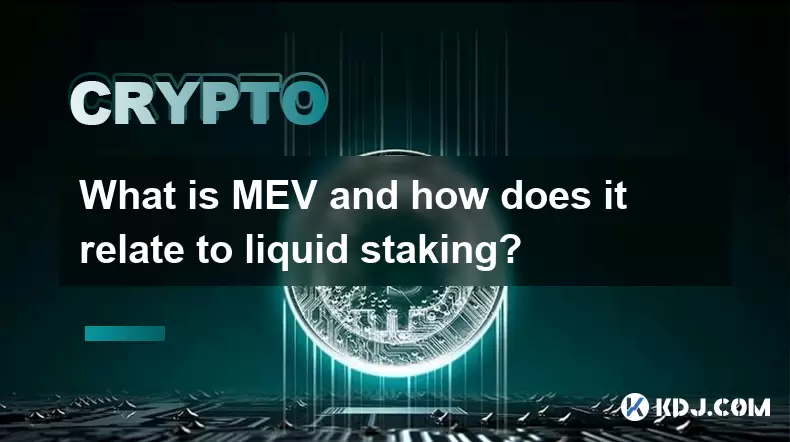
Understanding MEV in the Context of Blockchain and Cryptocurrencies
Maximum Extractable Value (MEV) refers to the maximum profit that validators or miners can extract from a blockchain by reordering, including, or excluding transactions within the blocks they produce. Initially known as Miner Extractable Value, MEV has evolved with the transition from Proof-of-Work (PoW) to Proof-of-Stake (PoS) blockchains, where validators replace miners. MEV strategies often involve arbitrage, liquidations, and front-running, where entities manipulate transaction ordering to gain financial advantage.
This concept has become increasingly relevant with the rise of decentralized finance (DeFi), where transaction timing and execution can significantly impact outcomes. As a result, MEV has become a critical area of interest for validators, developers, and researchers aiming to understand its implications on network fairness and security.
The Mechanics of MEV Extraction
MEV extraction typically involves searchers, block builders, and validators. Searchers scan the mempool (a pool of pending transactions) for profitable opportunities, such as arbitrage or liquidation events. They submit bundles of transactions to block builders, who assemble them into full blocks. These blocks are then proposed by validators who receive rewards for including MEV-rich transactions.
Validators can also run in-house MEV strategies, directly capturing value from transaction ordering. This process is often facilitated by MEV-boost services, which allow validators to outsource block-building to more efficient third-party builders while still earning additional rewards.
Introduction to Liquid Staking
Liquid staking is a mechanism that allows users to stake their tokens (such as ETH) while receiving fungible tokens in return that represent their staked assets plus yield. These liquid staking derivatives (LSDs), like stETH or rETH, can be used in DeFi protocols to generate additional returns, effectively enabling double staking.
This innovation solves the problem of capital inefficiency in traditional staking, where assets are locked and non-transferable. By introducing liquidity, liquid staking enhances capital efficiency, boosts network participation, and encourages broader adoption of Proof-of-Stake blockchains.
How MEV Relates to Liquid Staking Protocols
MEV plays a significant role in liquid staking ecosystems, particularly in how validators and staking pools can optimize revenue through transaction ordering. Since liquid staking platforms often operate large validator networks, they are in a strategic position to capture MEV.
Validators associated with liquid staking providers can use MEV-boost services to increase rewards for stakers. These additional earnings can be distributed back to token holders, enhancing the yield of liquid staking derivatives. In this context, MEV becomes a value-add for liquid staking protocols, contributing to higher APRs and improved capital efficiency.
However, the integration of MEV into liquid staking platforms raises centralization concerns, especially if a few entities control a large portion of the validator set and MEV extraction.
Implications and Considerations for Users
For users participating in liquid staking, understanding how MEV affects their yield is essential. While MEV can increase returns, it may also introduce risks related to transaction manipulation and centralization. Users should evaluate the transparency and governance of liquid staking platforms regarding MEV distribution and validator behavior.
Moreover, the design of the liquid staking protocol plays a critical role in how MEV benefits are shared. Some platforms may retain a portion of MEV profits, while others distribute them entirely to stakers. Understanding these dynamics can help users make informed decisions about where to stake their assets.
Technical Integration of MEV and Liquid Staking Platforms
Technically, liquid staking platforms integrate with MEV-boost relays to enable validators to capture MEV without running their own block-building infrastructure. This integration involves setting up relays, builders, and proposer components to facilitate MEV-aware block production.
The process includes:
- Configuring validators to use MEV-boost relays
- Connecting to trusted block builders
- Ensuring secure communication between proposer and builder components
- Monitoring MEV revenues and validator performance
These technical steps allow liquid staking providers to offer enhanced yields while maintaining decentralization and security.
FAQs
Q: Can MEV be completely eliminated in a Proof-of-Stake blockchain?
A: No, MEV is an inherent feature of blockchains where transaction ordering affects economic outcomes. However, its impact can be mitigated through fair sequencing services, MEV smoothing pools, and transparent governance mechanisms.
Q: Do all liquid staking platforms capture MEV?
A: No, not all platforms actively pursue MEV opportunities. Some focus solely on staking efficiency and decentralization, while others integrate MEV-boost services to enhance user yields.
Q: How can users assess whether a liquid staking platform shares MEV profits?
A: Users should review the platform’s transparency reports, governance models, and reward distribution policies. Many platforms disclose MEV-related earnings and distribution methods in their documentation or dashboards.
Q: Is MEV extraction considered ethical or harmful?
A: The ethics of MEV are debated. While arbitrage and liquidations are seen as market-efficient activities, front-running and sandwich attacks are often criticized for exploiting retail users. The blockchain community continues to explore solutions to make MEV extraction more equitable.
Disclaimer:info@kdj.com
The information provided is not trading advice. kdj.com does not assume any responsibility for any investments made based on the information provided in this article. Cryptocurrencies are highly volatile and it is highly recommended that you invest with caution after thorough research!
If you believe that the content used on this website infringes your copyright, please contact us immediately (info@kdj.com) and we will delete it promptly.
- Bitcoin Price Surges: Golden Cross Signals a Potential Big Move
- 2025-07-21 16:30:12
- Hyperliquid Gears Up: Market Momentum Builds for HYPE
- 2025-07-21 16:30:12
- Tezos, Conflux, and the Altcoin Rebound: What's Driving the Surge?
- 2025-07-21 14:50:12
- Giants Protocol Token Launch: Revolutionizing Asset Ownership with Blockchain Innovation
- 2025-07-21 15:30:12
- DeFi Evolution: Data Oracles and NFT Integration Leading the Charge
- 2025-07-21 14:30:12
- Super Apps, Stablecoins, and Future Payments: A NYC Perspective
- 2025-07-21 14:30:12
Related knowledge
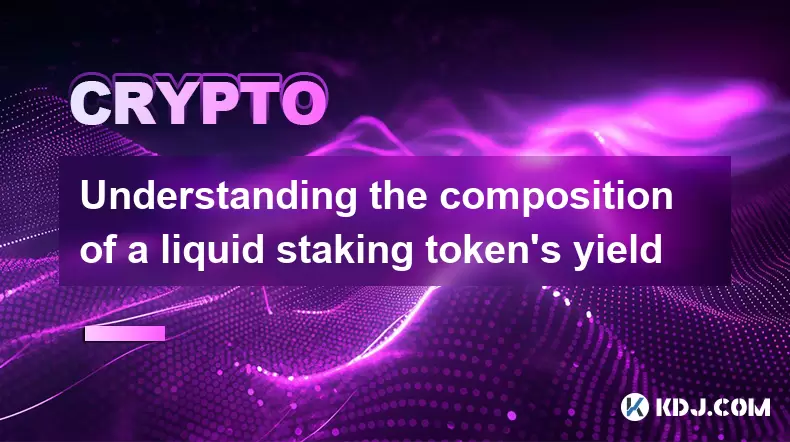
Understanding the composition of a liquid staking token's yield
Jul 20,2025 at 09:07am
What Is a Liquid Staking Token?A liquid staking token is a representative asset issued to users who stake their native cryptocurrency on a proof-of-st...
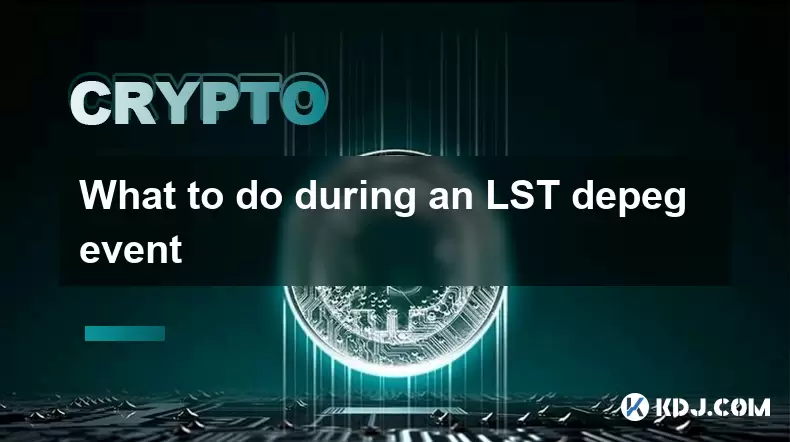
What to do during an LST depeg event
Jul 20,2025 at 04:57pm
Understanding LST Depeg EventsAn LST (Liquid Staking Token) depeg event occurs when the token, which is typically pegged to the value of the underlyin...
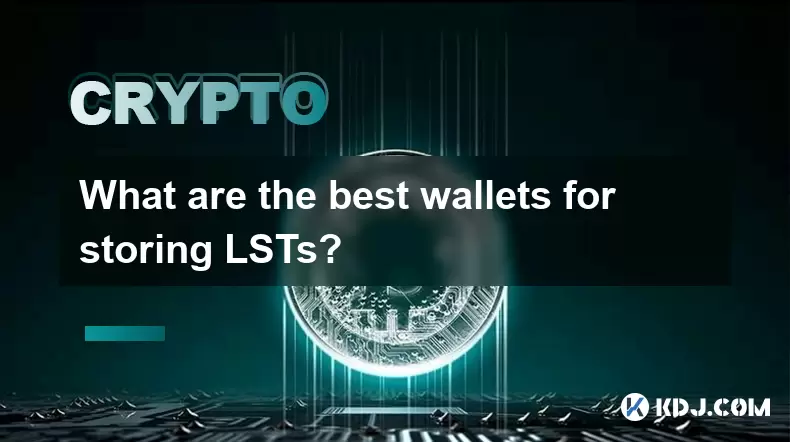
What are the best wallets for storing LSTs?
Jul 21,2025 at 03:14pm
Understanding LSTs and the Need for Secure StorageLSTs, or Liquid Staking Tokens, are derivative tokens representing staked assets on a blockchain. Wh...
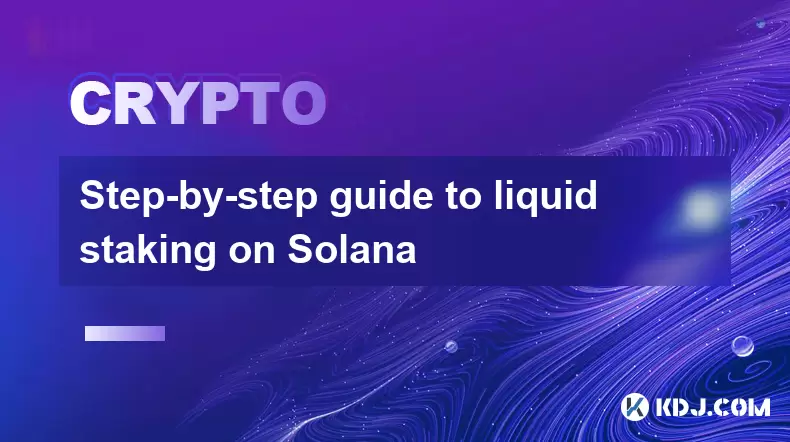
Step-by-step guide to liquid staking on Solana
Jul 20,2025 at 06:42am
What is Liquid Staking on Solana?Liquid staking is a mechanism that allows users to stake their cryptocurrency while retaining liquidity through the i...
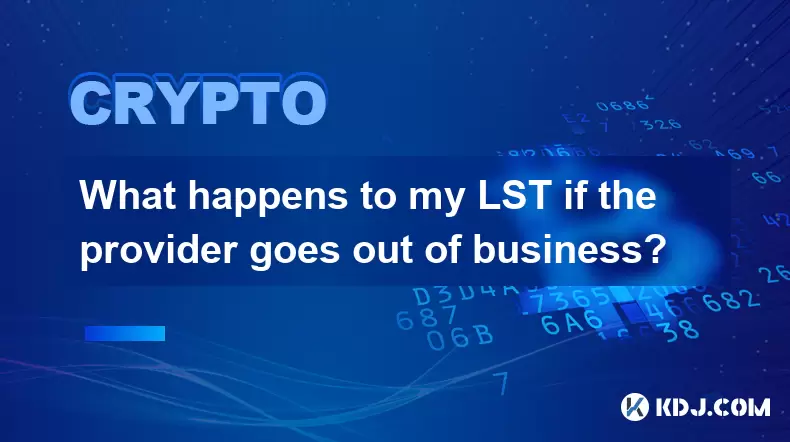
What happens to my LST if the provider goes out of business?
Jul 19,2025 at 10:21pm
Understanding LST and Its Dependence on ProvidersWhen you stake your Ethereum (ETH) through a Liquid Staking Token (LST) provider, you receive a token...
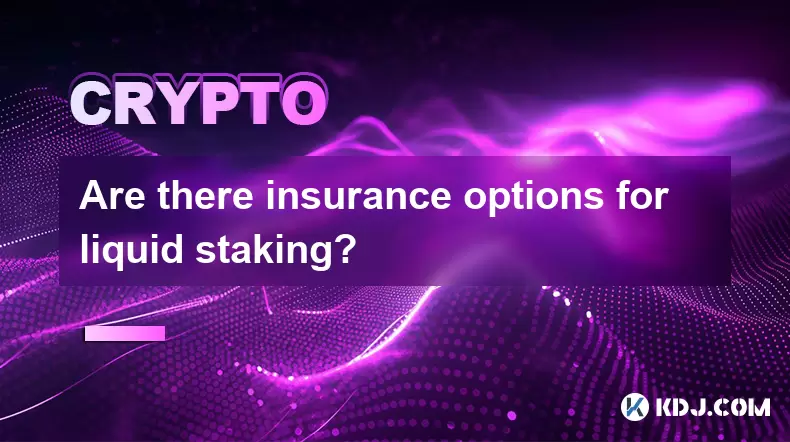
Are there insurance options for liquid staking?
Jul 19,2025 at 06:08pm
Understanding Liquid Staking and Its RisksLiquid staking is a process where users stake their cryptocurrency assets to participate in network validati...

Understanding the composition of a liquid staking token's yield
Jul 20,2025 at 09:07am
What Is a Liquid Staking Token?A liquid staking token is a representative asset issued to users who stake their native cryptocurrency on a proof-of-st...

What to do during an LST depeg event
Jul 20,2025 at 04:57pm
Understanding LST Depeg EventsAn LST (Liquid Staking Token) depeg event occurs when the token, which is typically pegged to the value of the underlyin...

What are the best wallets for storing LSTs?
Jul 21,2025 at 03:14pm
Understanding LSTs and the Need for Secure StorageLSTs, or Liquid Staking Tokens, are derivative tokens representing staked assets on a blockchain. Wh...

Step-by-step guide to liquid staking on Solana
Jul 20,2025 at 06:42am
What is Liquid Staking on Solana?Liquid staking is a mechanism that allows users to stake their cryptocurrency while retaining liquidity through the i...

What happens to my LST if the provider goes out of business?
Jul 19,2025 at 10:21pm
Understanding LST and Its Dependence on ProvidersWhen you stake your Ethereum (ETH) through a Liquid Staking Token (LST) provider, you receive a token...

Are there insurance options for liquid staking?
Jul 19,2025 at 06:08pm
Understanding Liquid Staking and Its RisksLiquid staking is a process where users stake their cryptocurrency assets to participate in network validati...
See all articles

























































































